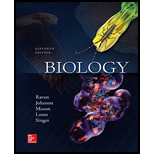
Concept explainers
a.
To determine:
The amount of copper between
Introduction:
The nutrients are the atoms, molecules, elements or the compounds required by the living organisms for their growth and development. The plants obtain nutrients from the soil or synthesize through photosynthesis. On the basis of requirements, the nutrients are of two types, namely micronutrients and macronutrients. The micronutrients are usually required in parts per million, whereas the macronutrients are required in somewhat larger amounts.
a.
Explanation of Solution
The copper is the micronutrient which is required in ppm for the growth of the plant. The conversion of
The amount of copper consumed by eating
b.
To determine:
The amount of zinc between
Introduction:
The nutrients are the atoms, molecules, elements or the compounds required by the living organisms for their growth and development. The plants obtain nutrients from the soil or synthesize through photosynthesis. On the basis of requirements, the nutrients are of two types, namely micronutrients and macronutrients. The micronutrients are usually required in parts per million, whereas the macronutrients are required in somewhat larger amounts.
b.
Explanation of Solution
The zinc is the micronutrient which is required in ppm for the growth of the plant. The conversion of
The amount of zinc consumed by eating
c.
To determine:
The amount of potassium between
Introduction:
The nutrients are the atoms, molecules, elements or the compounds required by the living organisms for their growth and development. The plants obtain nutrients from the soil or synthesize through photosynthesis. On the basis of requirements, the nutrients are of two types, namely micronutrients and macronutrients. The micronutrients are usually required in parts per million, whereas the macronutrients are required in somewhat larger amounts.
c.
Explanation of Solution
The potassium is the micronutrient which is required in larger amounts for the growth of the plant. The conversion of
d.
To determine:
The amount of iron between
Introduction:
The nutrients are the atoms, molecules, elements or the compounds required by the living organisms for their growth and development. The plants obtain nutrients from the soil or synthesize through photosynthesis. On the basis of requirements, the nutrients are of two types, namely micronutrients and macronutrients. The micronutrients are usually required in parts per million, whereas the macronutrients are required in somewhat larger amounts.
d.
Explanation of Solution
The iron is the micronutrient which is required in ppm for the growth of the plant. The conversion of
The amount of iron consumed by eating
The micronutrients are required in fewer amounts and the concentration is usually measured in ppm, whereas the macronutrients are required in larger amount and measured in percentage.
Want to see more full solutions like this?
Chapter 38 Solutions
Biology
- A slice of pizza has 500 kcal. If we could burn the pizza and use all the heat to warm a 50-L container of cold water, what would be the approximate increase in the temperature of the water? (note; A Liter of cold water weighs about 1 kg) a. 500 C b. 50C c. 10C d.100Carrow_forwardWhich of the following types of fat is required to be listed on the Nutrition Facts Panel by the U.S Food and Drug Administration? A. Trans fatty acids B. Essential fatty acids C. Phospholipids D. Sterolsarrow_forwardGiven for a plant: fresh weight = 68 g; dry weight = 15g; ash weight = 1.5g Compute for: a. % water b. % inorganic matter 2.21 C. % organic matter Do not include the percent sign in your answer. Round off to 2 decimal places.arrow_forward
- An unknown carbohydrate tested positive for Molisch test and Seliwanoff's test. it tested negative on Barfoed's test and benedict's test. identify the unknown a. Glucose b. sucrose c. Fructose d. Lactosearrow_forwardDefine the following terms: a. sugar b. glucose c. monosaccharidearrow_forwardThe Entenmann’s™ Glazed Donut has been measured by you to have 13 g, fat, 34 g carbohydrate, 2 g protein and a total mass of 60 g (as of 2006). a. Compare its caloric content as listed on the package (260 kcal) to that of our standard donut. b. Find percentage of calories that come from fat. c. Find the percentage of donut mass that does not come from fat, carbohydrate, or protein. l's'arrow_forward
- Select the answer below that best describes the following statement: Steroids are lipids. A. True B. False C. more information needed. D. Depends on the biological source of steroidarrow_forwardSelect the answer choice that best describes the meaning of the phrase "non-essential" amino acid. Select one: a. It must be ingested through dietary sources including water b. It is not commonly found in proteins c. It can be synthesized in cells using available substances d. It has lower energy content than an essential amino acidarrow_forwardWhich of the following statements about cholesterol is TRUE? A. Cholesterol has a multiple carbon-rings structure B. Cholesterol is a water-soluble nutrient C. Food that are high in cholesterol tend to be low in saturated fat D. Because cholesterol is not essential to our body, the FDA recommends keeping your cholesterol intake to an absolute minimumarrow_forward
- Bile salts are synthesized from: a. Cholesterol b. Prostaglandin c. Triacylglycerol d. Ceramidearrow_forwardDespite that trace elements are needed in small amounts, you can live without them Select one: a. False b. Truearrow_forwardAmylose and amylopectin are the fractions of starch having glucose molecules as monosaccharide units linked at the main chain. a. β1,4 b. β1,6 c. α1,6 d. α1,4arrow_forward


